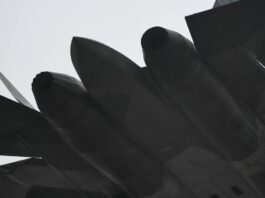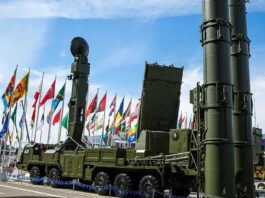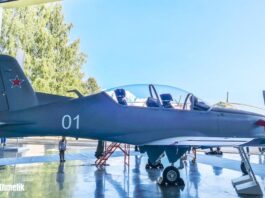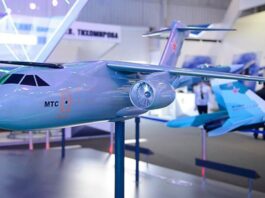
About ten units of the second batch of Type 054A frigates (Jiangkai II Class Frigates) for the Chinese Navy have been under construction at Hudong Shipyard for the past year.
Satellite photographs of this shipyard have been attentively monitored by experts for weeks, and they reported the appearance of new sections that don’t match either the Type 054A destroyer or the Type 052D destroyer. This suggests that a new class of surface combatant ships is being designed. A satellite image taken on January 21 removed any remaining doubt when it showed a ship of 147 metres in length and 18 metres in width being built in one of Hudong’s docks, confirming that a new class of Frigate was being built there.
Based on the hull of Type 054 frigates, the Type 054A frigates have better firepower. Their seaworthiness and combat capabilities are superior to the Type 051 destroyer, which was the main force of the Chinese Navy in the past. Since entering service, this-class ships have actively participated in international long-distance sailing activities, anti-piracy in Somalia, etc., and have accumulated considerable experience in ocean-going operations for the Chinese Navy.
The new Frigate is longer and especially broader by 2 metres than the current Type 054A; therefore, its gross displacement of roughly 6,000 tonnes should be substantially more impressive than the previous 4,000 tonnes, which is that of a FREMM of the French Navy. Because of its wider hull, it will likely be able to carry more powerful weapons, such as the universal vertical launch systems found on Type 055 and 052DL destroyers (the latter is also 18 metres wide), allowing them to fire missiles like the long-range anti-aircraft missile HHQ-9. The new Z-20S naval helicopter, which takes its design cues from the American MH-20 Seahawk and has a rotor diameter of up to 16 metres, offers much higher performance than the Z-9, which is twice as light but also more compact with a rotor diameter of only 12 metres. This increase in size will allow the new Frigate to accommodate this helicopter.
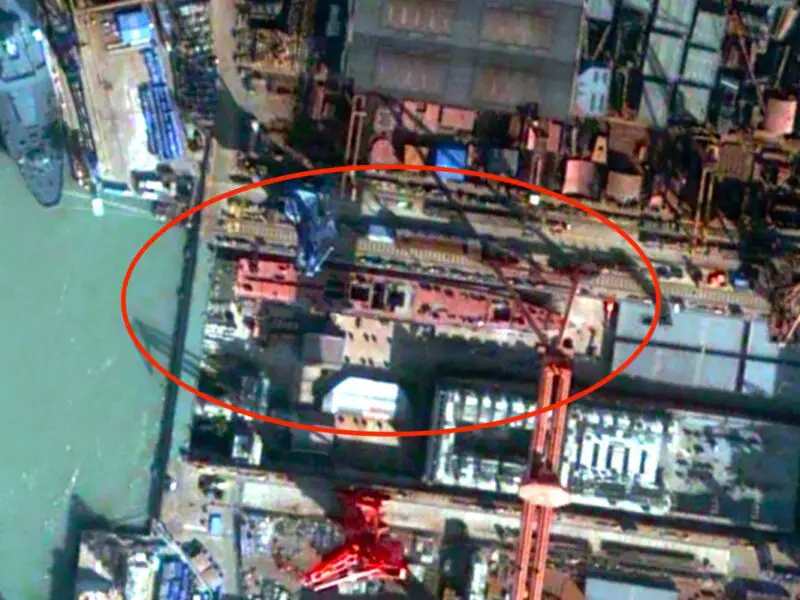
For now, there is no indication of how this new class will be classified in the future. In 2019, the PLA announced the impending arrival of a new frigate class known as Type 054B, which was designed to supplement the capabilities of the existing 054As. However, with the emergence of the Covid issue, all references to this programme vanished from government communications and Chinese propaganda outlets. The principal feature of this Type 054B was full electric propulsion, similar to that employed on British Daring Type 045 class destroyers. It will be necessary, at this point, to wait and watch in order to gain a better understanding of this new class, its capabilities, and the onboard systems. On the other hand, this satellite observation shows that China’s recent dynamism in naval construction and innovation is far from slowing down, with no less than four major new classes launched in the last three years. Some important warships include the Type 055 destroyer, Type 052DL destroyer, Type 075 LHD, and Type 003 aircraft carrier.
Since practically the beginning of this decade, the progression of the Chinese Navy has been a topic of attention, particularly among Western fleets. At this time, Chinese shipyards at Dalian, Jiangnan, and Hudong are responsible for the annual construction of a greater number of destroyers, frigates, corvettes, and amphibious ships than the United States of America and all of its allies in the Pacific theatre combined. In addition, new classes of Chinese combat surface ships, such as the heavy Type 055 destroyers, Type 052DL anti-aircraft destroyers, Type 071 assault ships, and Type 075 assault helicopter carriers, are not too far behind the most advanced classes of ships currently in service with the United States of America, Japan, South Korea, or Australia in terms of their technological capabilities. The introduction of around 30 anti-submarine warfare frigates of type 054A into service by the Chinese Navy between 2008 and 2019 is one of the most noteworthy advancements for the Chinese Navy.
According to NATO classification, the frigates of the Jiangkai II class, which measure 134 metres in length and 16 metres in beam, are specialised ships for coastal and open-sea anti-submarine warfare. These ships are equipped with three different sonars for this purpose, including a very effective hull sonar for shallow depths; a passive towed H/SJG-206 sonar for low-frequency listening; and a towed H/SJD-311 variable- The ship is equipped with a Z-9 helicopter based on the French Dauphin for target spotting and anti-submarine warfare missions in addition to its array of missiles, which includes eight supersonic YJ-83 anti-ship cruise missiles, 32 cells receiving HQ-16 anti-aircraft missiles derived from the Russian Buk system, and Yu-8 anti-submarine missiles inspired by the American ASROC. The Chinese Navy now possesses capabilities in high-seas combat that it did not have in the past, thanks to the Type 054A frigate and the Type 052D destroyer, which have anti-aircraft capabilities.
